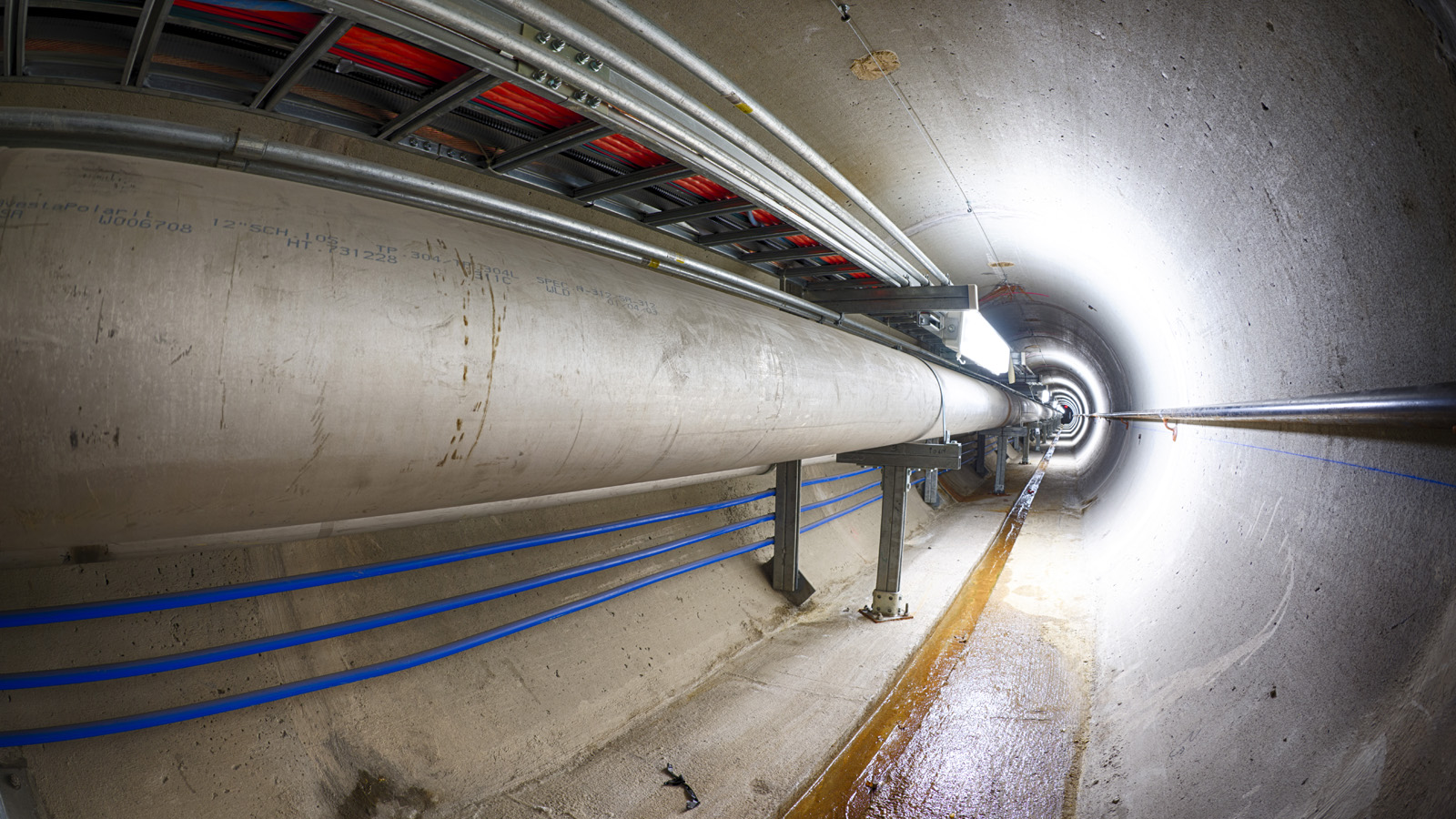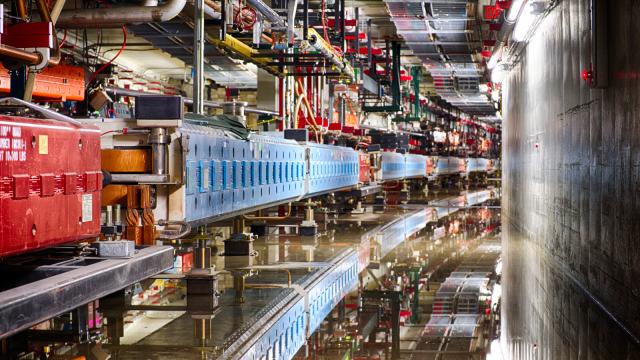Given how rarely neutrinos interact with other elementary particles, they’re notoriously difficult to study and consequently, our understanding of these electrically neutral subatomic entities remains rather sketchy. However, the US Department of Energy’s famed Fermilab in the US state of Illinois aims to unlock these particles’ secrets by blasting them through hundreds of miles of the Earth’s crusts.
It’s taken 15 months to upgrade the Fermilab accelerator complex to handle the massive 700 kilowatts of power needed for its NuMI Off-Axis Neutrino Appearance Experiment (NOvA), nearly doubling the previous 400 kilowatt limit. The experiment will essentially fire the world’s most concentrated neutrino beam from the Fermilab through the Earth to a 14,000-ton particle detector located in Ash River, Minnesota. The trip is expected to take roughly three milliseconds. researchers expect to find mostly muon neutrinos at the start of the beam — they’re using a much smaller, 200-ton detector at Fermilab — and mostly electron neutrinos at the Ash River end. Since they obviously can’t expect to track and study individual neutrinos, scientists will employ statistical models to determine how many(or even if any) of the neutrinos decayed into a different form.
But neutrinos don’t go where you tell them. Being electrically neutral, they’re unaffected by electromagnetic forces, which means that we can’t steer them using giant magnets like CERN does. Instead, Fermilab boffins have developed an ingenious workaround. Instead of aiming the neutrinos themselves, researchers are aiming and firing heavier, electrically charged particles that then decay into neutrinos. Using Fermilab’s Main Injector accelerator as a proton source, researchers will fire a proton beam at a graphite target to generate a mass of subatomic particles from the resulting proton-carbon impacts. Before they have time to decay, scientists then steer the cloud of particles towards the distant detector using powerful magnets. This path doesn’t require a tunnel, the particles simply fly under six miles of the the planet’s crust with very little interaction until a few of them strike the detector.
Per the Fermilab website,
The detectors are made up of 344,000 cells of extruded, highly reflective plastic PVC filled with liquid scintillator. Each cell in the far detector measures 3.9 cm wide, 6.0 cm deep and 15.5 meters long. When a neutrino strikes an atom in the liquid scintillator, it releases a burst of charged particles. As these particles come to rest in the detector, their energy is collected using wavelength-shifting fibres connected to photo-detectors. Using the pattern of light seen by the photo-detectors, scientists can determine what kind of neutrino caused the interaction and what its energy was.
“Almost all neutrino experiments are limited by the fact that neutrinos interact with matter so infrequently,” says Harvard physicist Gary Feldman, co-leader of the NOvA experiment, in a press statement. “NOvA is no exception. So the accelerator physicists at Fermilab came up with a scheme to approximately double the power of their neutrino beam.” This power doubling is the result of a variety of upgrades to the Fermilab accelerator system. These include higher-energy radio-frequency cavities, more and more powerful magnets, and a more powerful proton injector.

When the experiment concludes, researchers hope to better understand the intrinsic abilities and characteristics of these enigmatic particles. “The higher energy beam is going to be a big change from the low-energy run,” says Fermilab physicist Debbie Harris, co-leader of the MINERvA experiment. “It’s not exactly a whole new experiment, but there are going to be a lot of new things we will be able to measure about neutrinos. We’re psyched.” Not only that, some researchers have suggested that it may even uncover other as-of-yet-undiscovered subatomic particles. [Fermilab – MINOS – Symmetry Mag – Wiki]
Pictures: Fermilab
